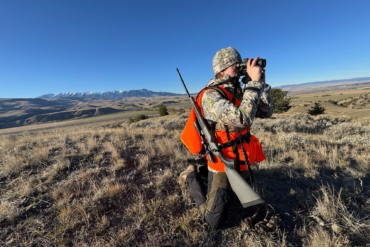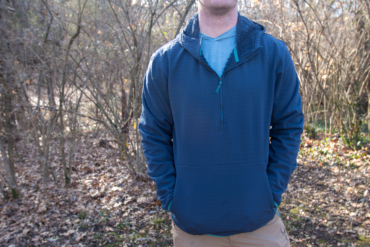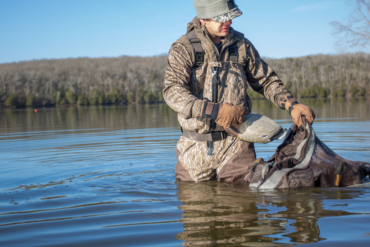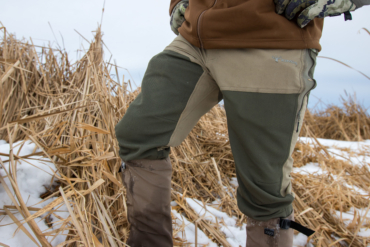The Patagonia Nano Puff has been in stores since 2010. It remains one of the brand’s best-selling lines for a reason: It packs, puffs, stuffs, and warms with remarkable versatility.
When GearJunkie first reviewed the Nano Puff, the story was mostly about this lightweight synthetic jacket’s ability to stuff into its own zippered chest pocket while still sporting key windproof and water-resistant properties important for outdoor adventures.
That hasn’t changed. But today the popularity of the original jacket has spurred a host of other Patagonia Nano Puff products. There’s a hoody, pullover, bivvy pullover, vest, and puffy pants, with options for men, women, and children.
Versatility: Wear the Nano Puff Anywhere
This sleek jacket is a favorite because, like many Patagonia products, it looks as good as it performs in a variety of situations. The Nano Puff is a well-loved lightweight outer layer for fall, winter, and spring.
In fact, one of our editors has pulled out the women’s Nano Puff hoody in bright Tomato a lot lately. It’s a nice choice for dry but cool days of autumn — and even some surprise early snow days here in the Denver foothills.
The Nano Puff is absolutely a three-season piece of gear. You’ll just need to wear it with other layers depending on the time of year and your activity level. For example, it would work well for camping, hiking, backpacking, and even snowsports.
It’s also one of those ubiquitous crossover pieces that look as good around town as on trails, which helps justify the $200 price tag for the original Nano Puff jacket. That said, we like this warmer so much that we could easily see investing in one to keep nice and one to beat up.
What’s Inside the Nano Puff
The Nano Puff is a sleek-looking coat. And that sleekness helps it compress comfortably under other gear — in a backpack or as an ideal layer for winter snow sessions. In fact, it continues to get lighter: The Nano Puff has lost over one ounce since its inception.
For wilderness pursuits, the jacket’s technical packability and warmth potential come from its core: PrimaLoft insulation. This is the Nano Puff feature that has evolved most over the years. And it’s also the feature that puts this jacket on par with a midgrade down jacket when considering the warmth-to-weight ratio for the investment.
Here’s the lowdown on the puff part: A quilted “brick” pattern keeps this thin yet surprisingly warm insulation layer in place. However, that’s one area to watch on the Nano Puff: the threading keeping these blocks together. If you hook them on something, they will come loose. So you might want to steer clear of rock climbing or other highly abrasive activities.
Inside the current Nano Puff is a synthetic insulator called PrimaLoft Gold Insulation Eco, made of 55% recycled polyester. Patagonia claims using this type of fill in the Nano Puff alone saved more than 2 million plastic bottles from the landfill in a single year. The brand claims the ultrafine treated fibers in the insulation help retain nearly all — 98% — of its warmth when wet.
This is intentional. It’s all part of Patagonia’s continued pursuit to source materials that are easier on the planet. The brand has been using recycled materials in its products since 1993 when it first turned plastic bottles into fleece. The Nano Puff jacket got its current recycled shell and liner fabrics in 2009.
In this case, the brand challenged partner PrimaLoft to make a more eco-friendly insulation for the best-selling Nano Puff — and the manufacturer delivered an entirely new standard.
Nano Puff Lining, Face, and Other Recycled Features
Patagonia also uses airy 100% recycled polyester for the jacket’s lining and face fabric as well. Even the Nano Puff’s zippers and label are now partially recycled. That means along with the eco-insulation, recycled materials now compose three-quarters of the Nano Puff jacket.
For a lightweight jacket, the shell does a decent job holding up and repelling rips in multiuse scenarios. There’s also DWR coating on the exterior for some added protection from the elements. While the water-resistant treatment helps rain bead up and run off quite well, don’t expect to drench this jacket and be super happy.
Eventually, there’s a saturation point. If it’s going to rain, it’s best to bring a waterproof shell along and count on the Nano Puff as a warm and light layer that will do most of the work before and after the deluge.

That brings me to the Nano Puff’s liner. It, too, can only do so much. Like the outer, when you add wind- and rain-blocking features to an inner, you typically sacrifice some breathability. It’s really hard to have the best of both.
So we can’t recommend the Nano Puff for high-aerobic activities like running or any situation where internal moisture management is a primary concern. This is especially important in cold weather because if you can’t wick that sweat well enough close to the body, it’s going sit sticky — and frigid — on your core.
That’s not a good place to be wet and cold. If you do try to push your activity level in the Nano Puff, make sure your base layer is dialed.
Other Nano Puff Features: Pockets, Zippers, Hoods
The Nano Puff has some other simple yet effective elements. Pockets are among them. This is especially exciting for a pocket-hound like me. The jacket’s zippered hand-warmer pockets are roomy.
And that original internal zippered chest pocket, which doubles as the jacket’s self-stuffing sack (with a carabineer loop), is also big enough for a hat, buff, even a small hydration bladder. If saving space is important to you, this zippered square stuff sack can easily compress even smaller to fit in a minimalist backpack.
 Of course, the hoody version of the Nano Puff adds a nice weather-blocking option for your head. But it’s also the priciest at $250. But it may be worth it if this feature is important to you.
Of course, the hoody version of the Nano Puff adds a nice weather-blocking option for your head. But it’s also the priciest at $250. But it may be worth it if this feature is important to you.
It’s not adjustable, but the hood is slim-fitting and zips high for neck protection. This “scuba style” hood, with a stretchy, durable trim, also wraps snugly at the chin and forehead. But if you have a proportionately large or small head, it’s probably worth trying this version before you buy.
https://www.youtube.com/watch?v=b7PXIZkHynA
The jacket has a “regular” cut. But that will mean different things to different sized people who use the jacket for various purposes. For example, if you’re a thin endurance athlete, the fit may be a little boxy for your high-performance pursuits. If you’re 5 feet 10 inches and 200 pounds, like one Nano Puff reviewer on REI.com, it may be totally fine for walking around but “a bit slim” and bunchy when sitting down for a beer.
Either way, there’s no overlooking that the basic jacket is under 12 ounces. The Nano Puff lives up to its name: It’s year-round performance in one petite package.












